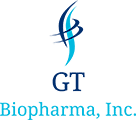预约演示
更新于:2025-05-07
Cell adhesion molecules x GPx
更新于:2025-05-07
基本信息
关联
1
项与 Cell adhesion molecules x GPx 相关的药物作用机制 细胞粘附分子抑制剂 [+1] |
在研机构- |
在研适应症- |
最高研发阶段终止 |
首次获批国家/地区- |
首次获批日期1800-01-20 |
3
项与 Cell adhesion molecules x GPx 相关的临床试验NCT00782613
Randomized, Double-Blind, Placebo-Controlled Study of Efficacy and Wafety of Topical ALT-2074 (SYI-2074) for Treatment of Chronic
The primary objective of this study will be to evaluate the efficacy of topical ALT-2074 applied twice daily for 28 days for treatment of chronic plaque psoriasis in adult subjects.
The secondary objective will be to evaluate the safety of topical ALT-2074 applied twice daily for 28 days for treatment of chronic plaque psoriasis in adult subjects.
Tertiary objectives will be to provide visual documentation of the improvement of psoriatic plaques treated with ALT-2074 using digital photography, and to determine the extent of systemic absorption of topically applied ALT-2074 based on a pharmacokinetic measurement of blood concentration.
The secondary objective will be to evaluate the safety of topical ALT-2074 applied twice daily for 28 days for treatment of chronic plaque psoriasis in adult subjects.
Tertiary objectives will be to provide visual documentation of the improvement of psoriatic plaques treated with ALT-2074 using digital photography, and to determine the extent of systemic absorption of topically applied ALT-2074 based on a pharmacokinetic measurement of blood concentration.
开始日期2008-11-01 |
申办/合作机构 |
NCT00491543
A Randomized, Double-Blind, Placebo-Controlled, Study to Evaluate the Safety, Pharmacokinetics and Pharmacodynamics of ALT 2074 in Subjects With Type 2 Diabetes Who Have a Haptoglobin Type 2-2 Genotype and Coronary Artery Disease
ALT-2074 (BXT-51072) belongs to a class of drugs called "glutathione peroxidase mimics." ALT-2074 works by imitating a substance produced in various tissues in the body, which prevents damage of the heart and blood vessels. Diabetic patients with a haptoglobin 2-2 genotype have poor cardiovascular clinical outcomes.
The purpose of this study is to assess the safety, the pharmacokinetic profile and characterize the effect on biomarkers of inflammation and oxidative stress of repeat doses of ALT 2074. Subjects must be diabetic, with evidence of coronary artery disease and a haptoglobin 2-2 genotype
The purpose of this study is to assess the safety, the pharmacokinetic profile and characterize the effect on biomarkers of inflammation and oxidative stress of repeat doses of ALT 2074. Subjects must be diabetic, with evidence of coronary artery disease and a haptoglobin 2-2 genotype
开始日期2007-06-01 |
申办/合作机构 |
NCT00320502
A Randomized, Double-Blind, Placebo-Controlled, Parallel Group Study to Determine the Effects of BXT-51072 on CK-MB in High-Risk Type 2 Diabetic Patients Undergoing Elective Percutaneous Coronary Intervention
The purpose of this study is to determine the safety and feasibility of BXT-51072 as a cardioprotective agent in diabetics undergoing elective angioplasty / percutaneous intervention (PCI), a procedure to "open" coronary arteries.
BXT-51072 belongs to a class of drugs called "glutathione peroxidase mimics." BXT-51072 works by imitating a substance produced in various tissues in the body, which prevents damage of the heart and blood vessels.
BXT-51072 belongs to a class of drugs called "glutathione peroxidase mimics." BXT-51072 works by imitating a substance produced in various tissues in the body, which prevents damage of the heart and blood vessels.
开始日期2006-05-01 |
申办/合作机构 |
100 项与 Cell adhesion molecules x GPx 相关的临床结果
登录后查看更多信息
100 项与 Cell adhesion molecules x GPx 相关的转化医学
登录后查看更多信息
0 项与 Cell adhesion molecules x GPx 相关的专利(医药)
登录后查看更多信息
2
项与 Cell adhesion molecules x GPx 相关的文献(医药)2020-06-02·Chronobiology International4区 · 医学
Melatonin and alcohol-related disorders
4区 · 医学
Review
作者: Kurhaluk, Natalia ; Tkachenko, Halyna
2005-06-01·Inflammation Research3区 · 医学
Nitric oxide prevents the bacterial translocation and inhibits the systemic inflammatory response produced by implantation of a vascular prosthesis followed by Zymosan A
3区 · 医学
Article
作者: F S Lozano ; F J García-Criado ; M B Barros ; A Gomez-Alonso ; M J Fresnadillo
分析
对领域进行一次全面的分析。
登录
或

生物医药百科问答
全新生物医药AI Agent 覆盖科研全链路,让突破性发现快人一步
立即开始免费试用!
智慧芽新药情报库是智慧芽专为生命科学人士构建的基于AI的创新药情报平台,助您全方位提升您的研发与决策效率。
立即开始数据试用!
智慧芽新药库数据也通过智慧芽数据服务平台,以API或者数据包形式对外开放,助您更加充分利用智慧芽新药情报信息。
生物序列数据库
生物药研发创新
免费使用
化学结构数据库
小分子化药研发创新
免费使用
